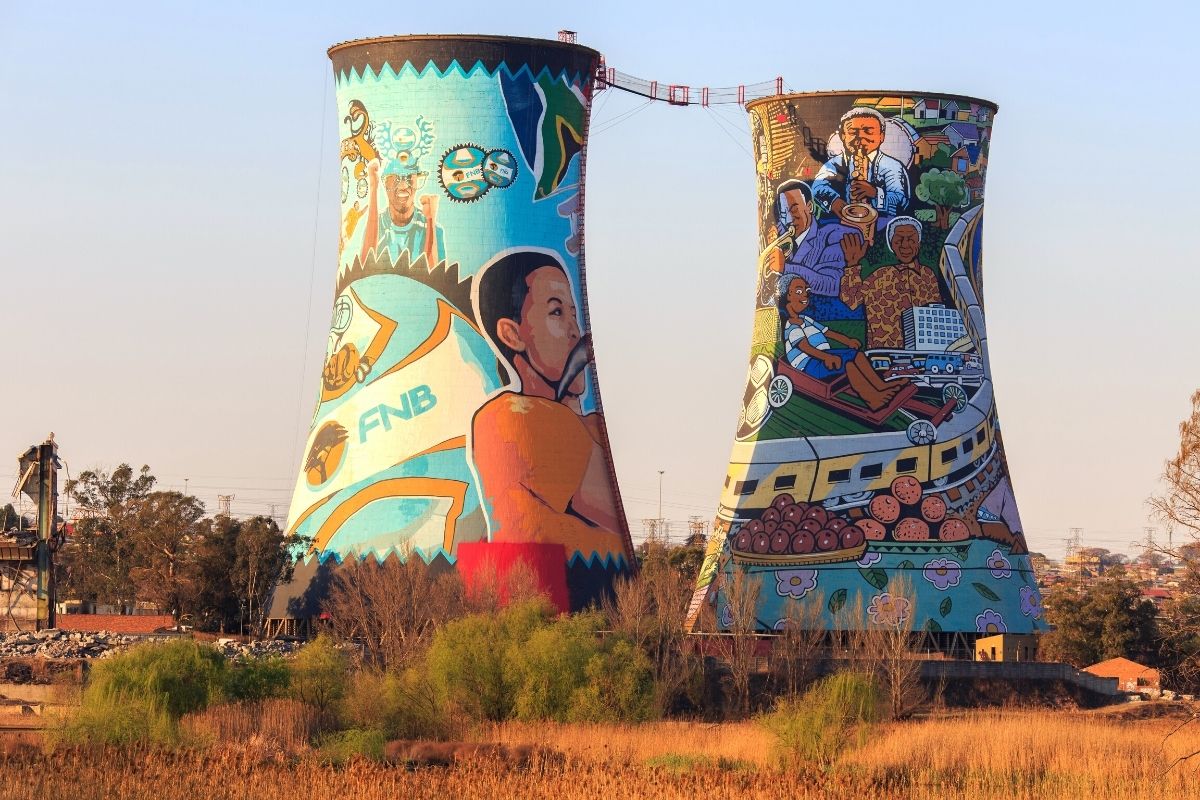Not known Details About Johannesburg North Attractions
Not known Details About Johannesburg North Attractions
Blog Article
The smart Trick of Johannesburg North Attractions That Nobody is Talking About
Table of ContentsJohannesburg North Attractions - The FactsFacts About Johannesburg North Attractions RevealedThe 8-Minute Rule for Johannesburg North AttractionsJohannesburg North Attractions for DummiesIndicators on Johannesburg North Attractions You Should KnowThe Single Strategy To Use For Johannesburg North Attractions
The city owes its location to the existence of a much more valuable source: gold. The city expanded on the side of the Witwatersrand Main Coral reef, a below ground stratum of gold-bearing quartz-silica empire that arcs for numerous miles beneath the Highveld. A lot of the gold mines in the city stopped procedure in the 1970s, however in its day the Witwatersrand gold sector made up even more than 40 percent of the world's annual gold production.Johannesburg has a pleasant environment. Summer temperature levels balance regarding 75 F (24 C); winter temperatures balance about 55 F (13 C) and just sometimes dip listed below cold. The city appreciates about eight hours of sunshine daily in both winter and summertime. Rainfall averages concerning 28 inches (700 millimetres) per annum, but the overall differs considerably from year to year.
What rain the city obtains drops almost exclusively in the summertime months, commonly in spectacular late-afternoon electrical tornados., where several homeowners still rely on coal for gas.

Little Known Questions About Johannesburg North Attractions.
The equilibrium of the city is occupied by whites. Accommodation differs in personality and top quality. Soweto is notorious for its limitless rows of municipally constructed, two-room matchbox homes, yet it likewise has a couple of thriving territories as well as bristling squatter camps, where 10s of thousands live without water, electrical power, or hygiene facilities.
Physical growth, although rather restricted by transportation, continued rapidly as migration to South Africa, and Johannesburg particularly, boosted dramatically. This issue was resolved in the 1930s when the automobile was introduced in mass manufacturing to South Africa. Automobiles were, generally, constrained to the rich, and allowed them to relocate to the north of the city and commute into the centre.
The majority of bad suburban areas were mixed, with inadequate blacks and whites living together, although the wealthy suburbs see this site were usually scheduled for whites.
The number of people living in the internal city on an informal basis is unidentified, as numerous are prohibited immigrants. The joblessness, education, and age accounts of the location are all unknown, due to the difficulty of obtaining reliable details regarding the location.
The Basic Principles Of Johannesburg North Attractions
Centred on the CBD, the region consists of the residential areas of Yeoville, Bellevue, Troyeville, Jeppestown, and Berea to the eastern. To the west it infects Pageview (Johannesburg North attractions) and Fordsburg. There are tiny enterprise zones to the south, such as City West-Denver and Benrose. Around 800,000 commuters go through the internal city on a daily basis, and it functions as a local purchasing node for visitors from the southerly suburban areas. Yeoville and Bellevue have a mix of apartment and solitary domestic systems on tiny lots. The area lies on a hilly divide that ranges from east to west. The most noticeable geographical feature is Observatory Ridge, which is called for the huge observatory located on it. The recreational areas are no more utilized, because of safety issues.

An Unbiased View of Johannesburg North Attractions
R. Tambo International Airport). The eastern suburbs are a few of the earliest areas of Johannesburg, there are huge areas of Jewish and other European histories, most of the populace is English speaking. There are three fairway in addition to a number of protected ridges with viewsites. There are several well-developed and up-market enjoyment and purchasing areas in the eastern such as the Eastgate Shopping Centre and the Greenstone shopping center.
The area is primarily made up of old "matchbox" homes, or four-room homes built by the federal government, that were built to provide inexpensive accommodation for black employees throughout apartheid. Soweto is an abbreviation, meaning "South Western Townships". Street after road in this area is lined with matchboxes; however, there are a couple of smaller sized locations where thriving Sowetans have actually developed houses that are much more comparable in stature with those in even more upscale residential areas.
Hostels are one more prominent physical feature of Soweto. Originally developed to house male migrant employees, several have actually been enhanced as residences for pairs and more families. The N1 Western Bypass skirts the eastern limit of Soweto. The residential area was not traditionally permitted to develop work centres within the area, so practically all of its residents are commuters to other components of the city.
The smart Trick of Johannesburg North Attractions That Nobody is Talking About
The residential locations in the northern suburbs are primarily official, with no substantial areas of casual housing, or real estate that does not have a permanent structure. This is a well-known location, there is a trend of land use adjustment from property to business, specifically along primary arterial roadways and around well established nodes.
Roads to the eastern discover here and west are much less well created, as there are no freeways travelling in that direction. Towards the northern border of the city, the thickness of advancement reduces, leaving huge locations of undeveloped land around Midrand.
The Ultimate Guide To Johannesburg North Attractions
, which is located on a hillside forgeting the inner city and Hillbrow.
Report this page